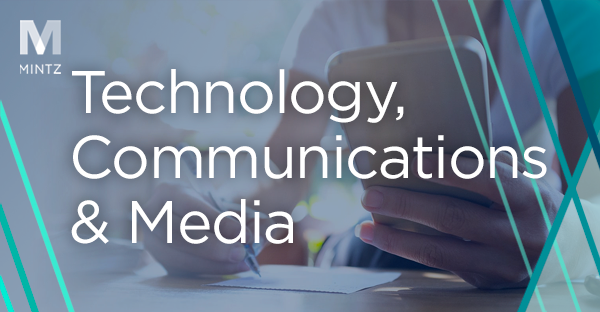Telephone and Texting Compliance News: Regulatory Update — Commission Adopts Second Report and Order On Robotexting With Some Changes
The Federal Communications Commission (FCC) adopted a Second Report and Order (“Report and Order”) and Second Further Notice of Proposed Rulemaking (“Second Further Notice”) at its December Open Meeting. We summarized the draft Report and Order last month in detail, however, the FCC made some changes in the version adopted at the Open Meeting.
Closing the Lead Generator Loophole
As we explained in November, the Report and Order adopts a rule that requires “one-to-one” consent between sellers and consumers, meaning that telemarketers who use texting or calling must obtain a consumer’s prior express written consent to be contacted by each individual seller on comparison shopping website. The FCC modified the “lead generator loophole” section to address an alternative proposal and to extend the new rule’s implementation deadline.
First, the FCC explicitly rejected a proposal by certain industry stakeholders that would have permitted lead generators to obtain consent through a hyperlinked list of sellers with whom the consumer is matched but that the consumer would see only after providing consent to be called or texted. The FCC clarified that this proposal did not fit within its new consent framework.The FCC explained that this proposal would not give consumers sufficient control over the parties from which they consent to receive calls and texts and would deprive them of the ability to grant consent only to those sellers from whom they want calls and texts.
Second, the FCC extended the implementation period from six months to one year for businesses to make necessary changes to ensure the consent they obtain complies with the new rules. This means the “one-to-one” consent requirement would not be effective until the later of (i) 12 months following publication of the Report and Order in the Federal Register or (ii) 30 days after notice of approval from the Office of Management and Budget is published in the Federal Register.
Requiring Mobile Wireless Providers to Block Text Messages On Commission Notification
In addition to the consent requirements, the Report and Order also requires terminating providers to block text messages from certain numbers upon notification from the Enforcement Bureau.
Under the FCC’s earlier-circulated draft rule, upon Enforcement Bureau notification, terminating providers would have been required to investigate suspicious traffic and block those texts unless the provider’s investigation determined the texts were legal. In the adopted version, the FCC removed the investigatory element. Instead, the FCC will require terminating providers to block all texts from a particular number or numbers immediately upon notification from the Enforcement Bureau and respond to the notification indicating that the provider received the notice and has initiated blocking.In explaining the change, the FCC cited a letter from industry stakeholders asserting that requiring providers to investigate prior to blocking constitutes an inappropriate delegation of the agency’s investigatory responsibility. While the FCC disagreed with that argument, it nonetheless removed the investigation requirement as overly burdensome on terminating providers, which it determined were not the “choke point” for illegal traffic. The adopted rule also clarified that the required response to the Enforcement Bureau’s notice could be as simple as acknowledging receipt and indicating the provider will initiate blocking.
The FCC also added text clarifying that terminating providers are not required to monitor whether any numbers subject to blocking have been reassigned however, they must notify the FCC and cease blocking if the provider learns of a number reassignment. The Report and Order also encouraged providers to monitor for number reassignment if they are able to do so.
Finally, the adopted Report and Order set a six-month implementation period for this rule. Terminating providers must begin blocking upon FCC notification 180 days after the Report and Order is published in the Federal Register.
Second Further Notice of Proposed Rulemaking
Attached to the Report and Order was a Second Further Notice of Proposed Rulemaking. The FCC made no substantive changes to the Second Further Notice from the draft version.
The Second Further Notice seeks comment on a number of proposals to expand the FCC’s call blocking and authentication requirements for providers to text messaging. Specifically, the Second Further Notice proposes the following:
- Expanding the requirement to block upon Enforcement Bureau notification of illegal texts to originating providers and other downstream providers.
- Requiring or incentivizing providers to block texts based on reasonable analytics. Like the calling rules, this proposal would provide a safe harbor for providers who block texts based on reasonable analytics on an opt-out basis and would also permit providers to block texts that are highly likely to be illegal based on reasonable analytics without consumer consent.
- Requiring providers to respond to traceback requests for suspicious texting traffic within 24 hours.
- Requiring providers to make e-mail-to-text an opt-in service.
The Second Further Notice would also seek additional comment on the FCC’s previous proposal to require providers to implement caller ID authentication technologies – STIR/SHAKEN – on text messaging. The FCC has so far declined to act on this proposal, in part because the record has been mixed on the technical feasibility of such a requirement, with many commenters noting that STIR/SHAKEN is only designed to work over internet protocol (IP-based) networks and that number spoofing is rare in illegal texting.
Comments and reply comments on the Second Further Notice will be due 30 and 45 days, respectively, after publication in the Federal Register.



